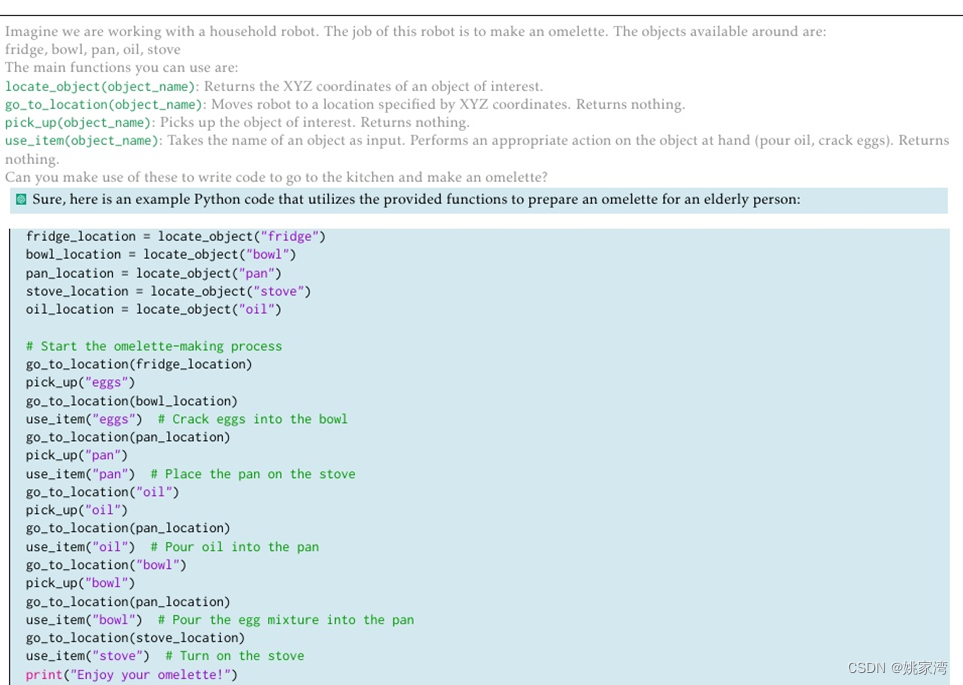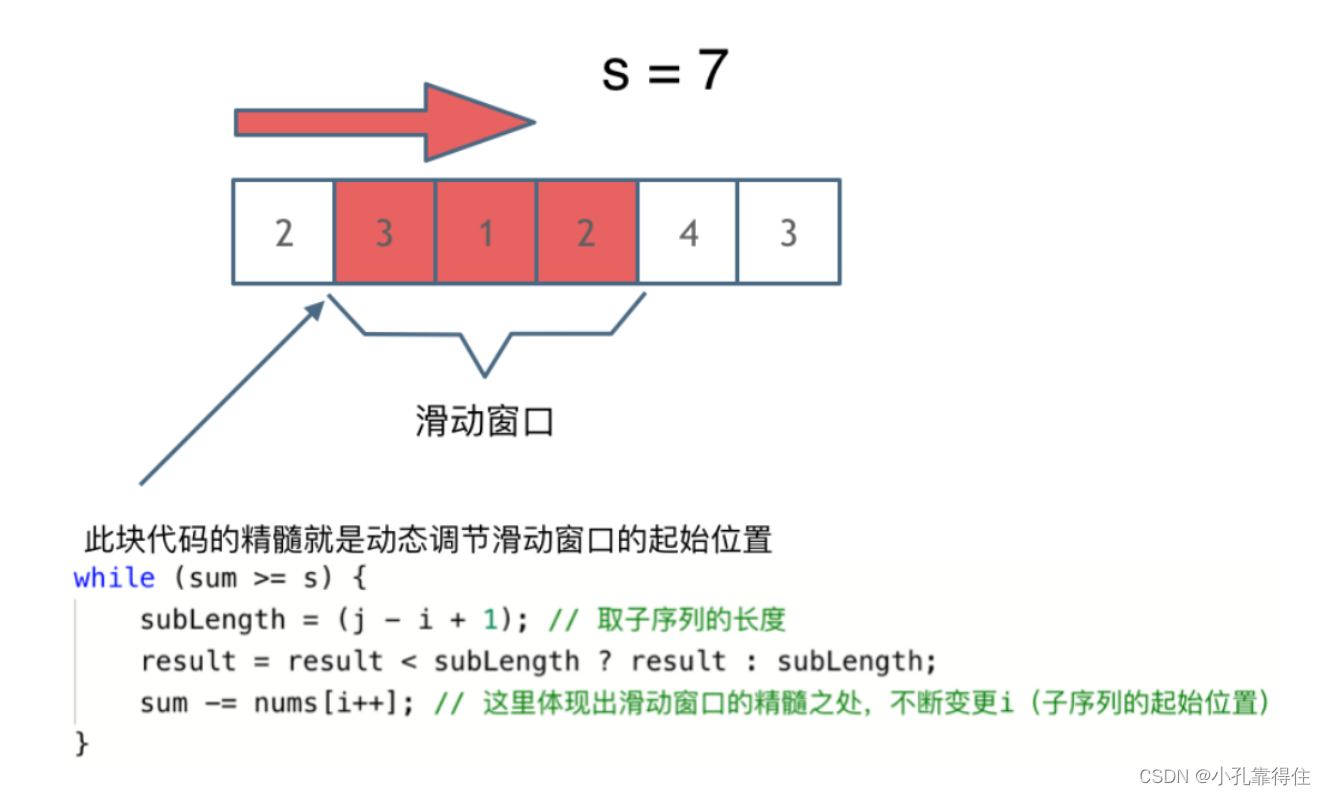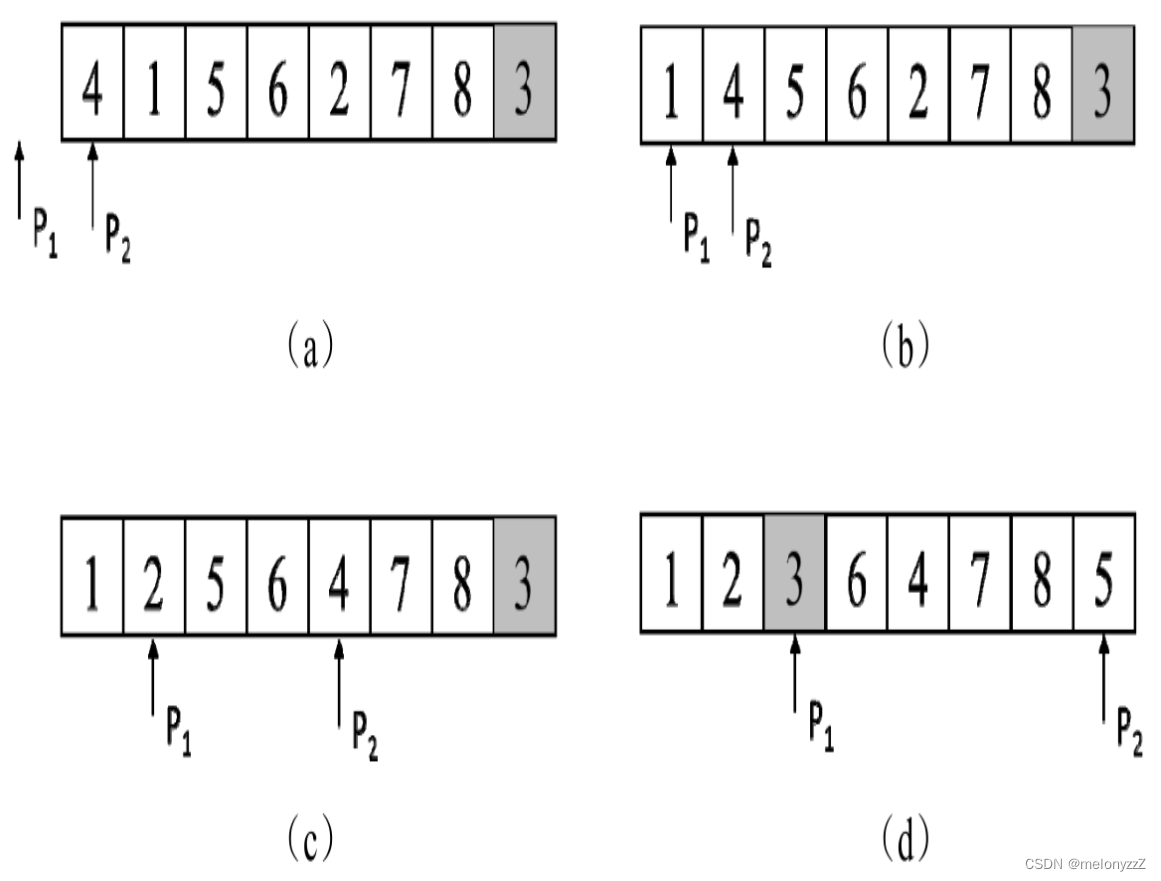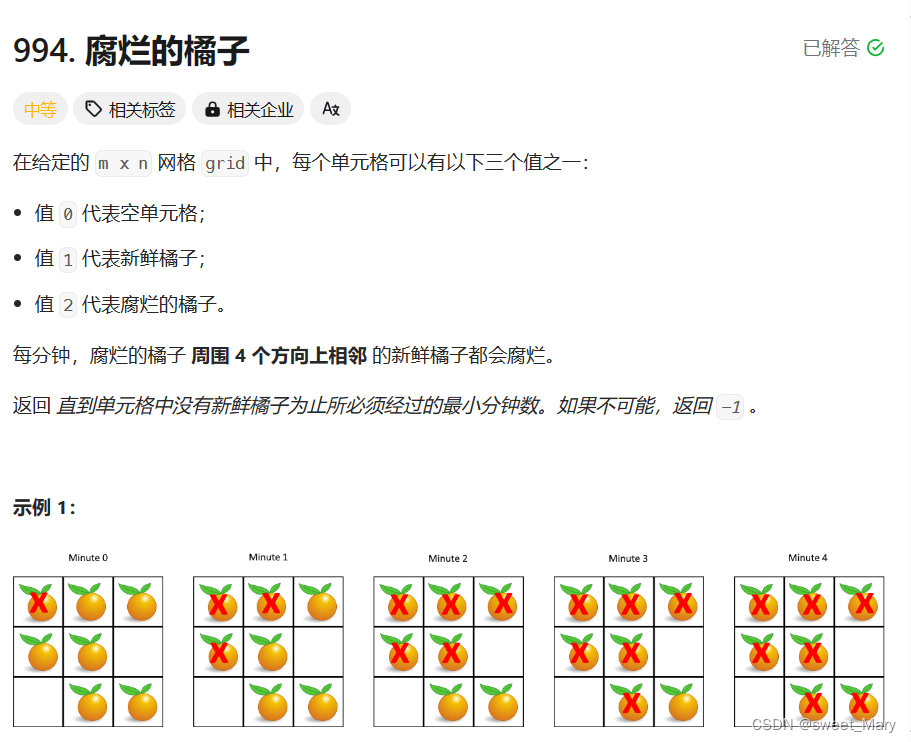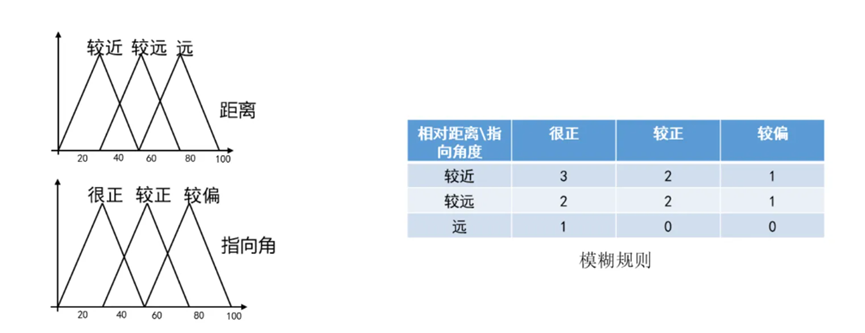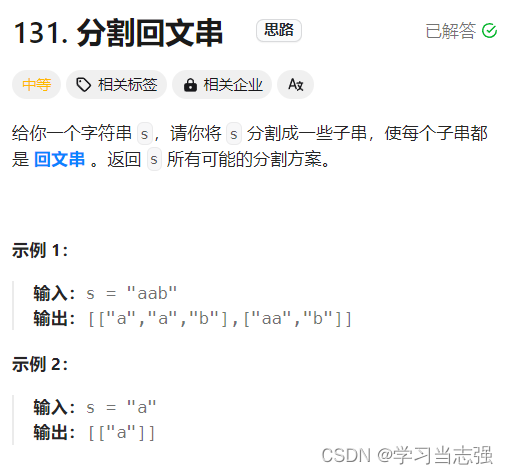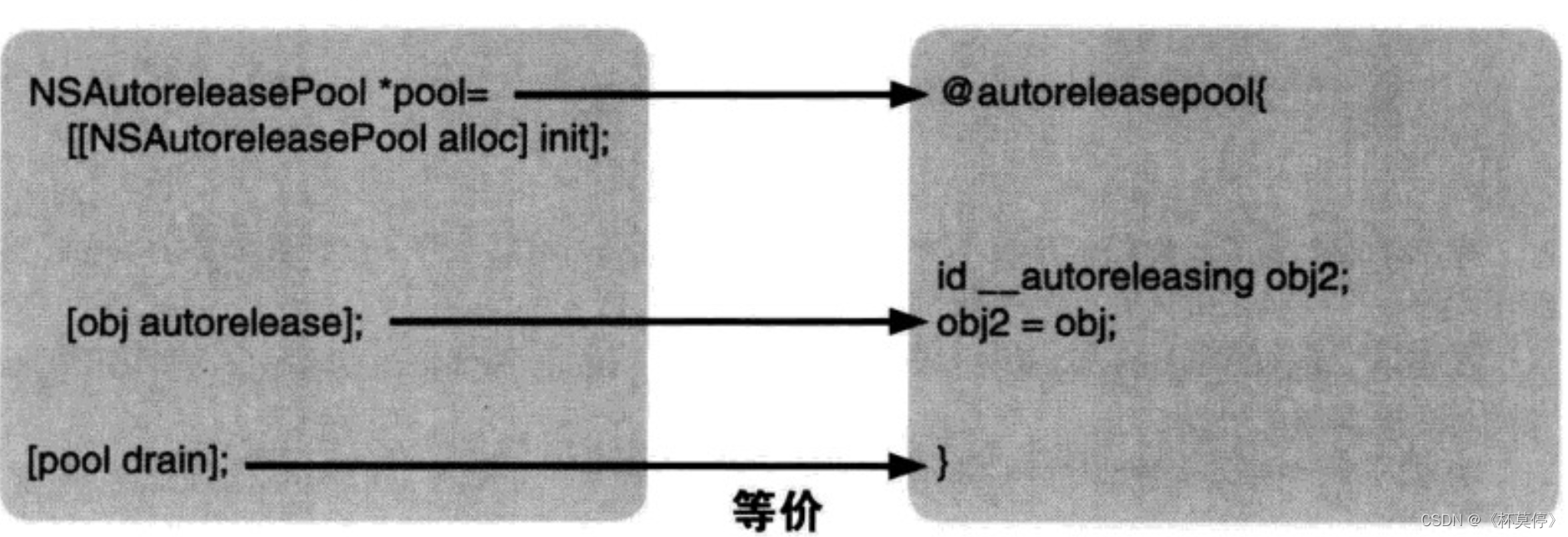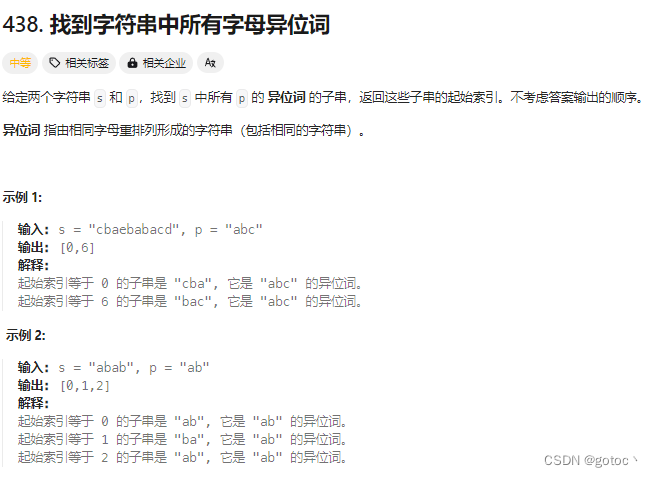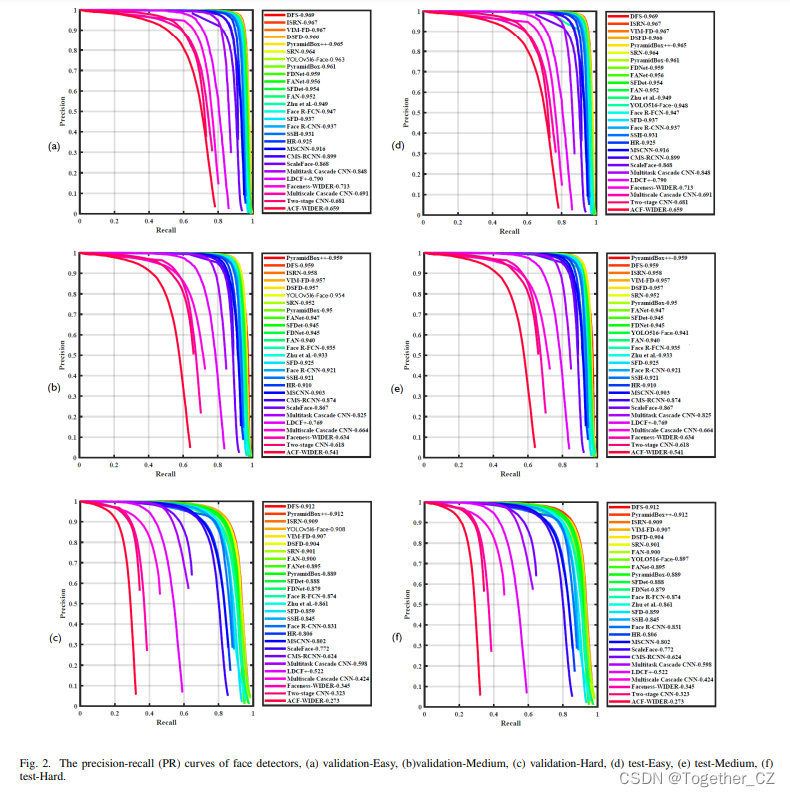ChatGPT Prompt Engineering for Developers
本文是 https://www.deeplearning.ai/short-courses/chatgpt-prompt-engineering-for-developers/ 这门课程的学习笔记。

ChatGPT提示词工程:prompt和chatbot
文章目录
- ChatGPT Prompt Engineering for Developers
- What you’ll learn in this course
- Guidelines for Prompting
- Setup
- Load the API key and relevant Python libaries.
- helper function
- Prompting Principles
- Principle 1: Tactics
- Tactic 1: Use delimiters to clearly indicate distinct parts of the input
- Tactic 2: Ask for a structured output
- Tactic 3: Ask the model to check whether conditions are satisfied
- Tactic 4: "Few-shot" prompting
- Principle 2: Give the model time to “think”
- Tactic 1: Specify the steps required to complete a task
- Tactic 2: Instruct the model to work out its own solution before rushing to a conclusion
- Model Limitations: Hallucinations
- Iterative Prompt Development
- Setup
- Generate a marketing product description from a product fact sheet
- Issue 1: The text is too long
- Issue 2. Text focuses on the wrong details
- Issue 3. Description needs a table of dimensions
- Load Python libraries to view HTML
- Summarizing
- Setup
- Text to summarize
- Summarize with a word/sentence/character limit
- Summarize with a focus on shipping and delivery
- Summarize with a focus on price and value
- Try "extract" instead of "summarize"
- Summarize multiple product reviews
- Inferring
- Setup
- Product review text
- Sentiment (positive/negative)
- Identify types of emotions
- Identify anger
- Extract product and company name from customer reviews
- Doing multiple tasks at once
- Inferring topics
- Infer 5 topics
- Make a news alert for certain topics
- Transforming
- Setup
- Translation
- Universal Translator
- Tone Transformation
- Format Conversion
- Spellcheck/Grammar check.
- Expanding
- Setup
- Customize the automated reply to a customer email
- Using different temperature
- Chatbot
- The Chat Format
- Setup
- OrderBot
- 后记
What you’ll learn in this course
In ChatGPT Prompt Engineering for Developers, you will learn how to use a large language model (LLM) to quickly build new and powerful applications. Using the OpenAI API, you’ll be able to quickly build capabilities that learn to innovate and create value in ways that were cost-prohibitive, highly technical, or simply impossible before now. This short course taught by Isa Fulford (OpenAI) and Andrew Ng (DeepLearning.AI) will describe how LLMs work, provide best practices for prompt engineering, and show how LLM APIs can be used in applications for a variety of tasks, including:
-
Summarizing (e.g., summarizing user reviews for brevity)
-
Inferring (e.g., sentiment classification, topic extraction)
-
Transforming text (e.g., translation, spelling & grammar correction)
-
Expanding (e.g., automatically writing emails)
In addition, you’ll learn two key principles for writing effective prompts, how to systematically engineer good prompts, and also learn to build a custom chatbot. All concepts are illustrated with numerous examples, which you can play with directly in our Jupyter notebook environment to get hands-on experience with prompt engineering
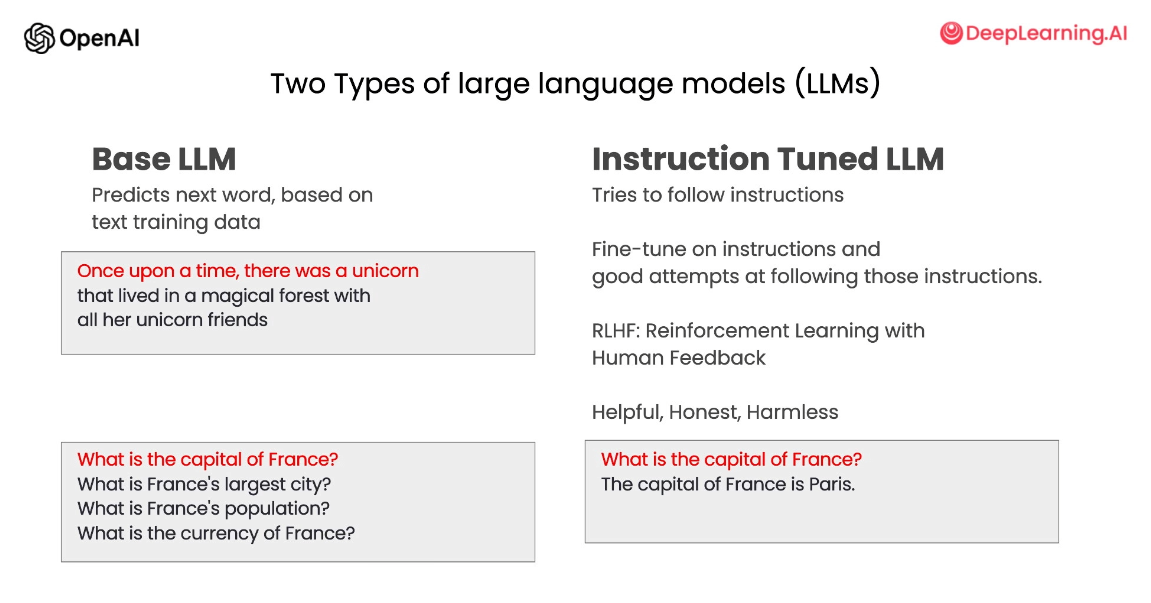
Guidelines for Prompting
In this lesson, you’ll practice two prompting principles and their related tactics in order to write effective prompts for large language models.
Setup
Load the API key and relevant Python libaries.
In this course, we’ve provided some code that loads the OpenAI API key for you.
import openai
import os
from dotenv import load_dotenv, find_dotenv
_ = load_dotenv(find_dotenv())
openai.api_key = os.getenv('OPENAI_API_KEY')
helper function
Throughout this course, we will use OpenAI’s gpt-3.5-turbo model and the chat completions endpoint.
This helper function will make it easier to use prompts and look at the generated outputs.
Note: In June 2023, OpenAI updated gpt-3.5-turbo. The results you see in the notebook may be slightly different than those in the video. Some of the prompts have also been slightly modified to product the desired results.
def get_completion(prompt, model="gpt-3.5-turbo"):
messages = [{"role": "user", "content": prompt}]
response = openai.ChatCompletion.create(
model=model,
messages=messages,
temperature=0, # this is the degree of randomness of the model's output
)
return response.choices[0].message["content"]
Note: This and all other lab notebooks of this course use OpenAI library version 0.27.0.
In order to use the OpenAI library version 1.0.0, here is the code that you would use instead for the get_completion function:
client = openai.OpenAI()
def get_completion(prompt, model="gpt-3.5-turbo"):
messages = [{"role": "user", "content": prompt}]
response = client.chat.completions.create(
model=model,
messages=messages,
temperature=0
)
return response.choices[0].message.content
Prompting Principles
- Principle 1: Write clear and specific instructions
- Principle 2: Give the model time to “think”

Principle 1: Tactics
Tactic 1: Use delimiters to clearly indicate distinct parts of the input
- Delimiters can be anything like: ```, “”", < >,
<tag> </tag>, `:
text = f"""
You should express what you want a model to do by \
providing instructions that are as clear and \
specific as you can possibly make them. \
This will guide the model towards the desired output, \
and reduce the chances of receiving irrelevant \
or incorrect responses. Don't confuse writing a \
clear prompt with writing a short prompt. \
In many cases, longer prompts provide more clarity \
and context for the model, which can lead to \
more detailed and relevant outputs.
"""
prompt = f"""
Summarize the text delimited by triple backticks \
into a single sentence.
```{text}```
"""
response = get_completion(prompt)
print(response)
Output
It is important to provide clear and specific instructions to a model in order to guide it towards the desired output and reduce the chances of receiving irrelevant or incorrect responses, with longer prompts often providing more clarity and context for the model.
Tactic 2: Ask for a structured output
- JSON, HTML
prompt = f"""
Generate a list of three made-up book titles along \
with their authors and genres.
Provide them in JSON format with the following keys:
book_id, title, author, genre.
"""
response = get_completion(prompt)
print(response)
Output
[
{
"book_id": 1,
"title": "The Midnight Garden",
"author": "Elena Rivers",
"genre": "Fantasy"
},
{
"book_id": 2,
"title": "Whispers in the Wind",
"author": "Lucas Blackwood",
"genre": "Mystery"
},
{
"book_id": 3,
"title": "Echoes of the Past",
"author": "Samantha Greene",
"genre": "Historical Fiction"
}
]
Tactic 3: Ask the model to check whether conditions are satisfied
text_1 = f"""
Making a cup of tea is easy! First, you need to get some \
water boiling. While that's happening, \
grab a cup and put a tea bag in it. Once the water is \
hot enough, just pour it over the tea bag. \
Let it sit for a bit so the tea can steep. After a \
few minutes, take out the tea bag. If you \
like, you can add some sugar or milk to taste. \
And that's it! You've got yourself a delicious \
cup of tea to enjoy.
"""
prompt = f"""
You will be provided with text delimited by triple quotes.
If it contains a sequence of instructions, \
re-write those instructions in the following format:
Step 1 - ...
Step 2 - …
…
Step N - …
If the text does not contain a sequence of instructions, \
then simply write \"No steps provided.\"
\"\"\"{text_1}\"\"\"
"""
response = get_completion(prompt)
print("Completion for Text 1:")
print(response)
Output
Completion for Text 1:
Step 1 - Get some water boiling.
Step 2 - Grab a cup and put a tea bag in it.
Step 3 - Pour the hot water over the tea bag.
Step 4 - Let the tea steep for a few minutes.
Step 5 - Remove the tea bag.
Step 6 - Add sugar or milk to taste.
Step 7 - Enjoy your delicious cup of tea.
text_2 = f"""
The sun is shining brightly today, and the birds are \
singing. It's a beautiful day to go for a \
walk in the park. The flowers are blooming, and the \
trees are swaying gently in the breeze. People \
are out and about, enjoying the lovely weather. \
Some are having picnics, while others are playing \
games or simply relaxing on the grass. It's a \
perfect day to spend time outdoors and appreciate the \
beauty of nature.
"""
prompt = f"""
You will be provided with text delimited by triple quotes.
If it contains a sequence of instructions, \
re-write those instructions in the following format:
Step 1 - ...
Step 2 - …
…
Step N - …
If the text does not contain a sequence of instructions, \
then simply write \"No steps provided.\"
\"\"\"{text_2}\"\"\"
"""
response = get_completion(prompt)
print("Completion for Text 2:")
print(response)
Output
Completion for Text 2:
No steps provided.
Tactic 4: “Few-shot” prompting
prompt = f"""
Your task is to answer in a consistent style.
<child>: Teach me about patience.
<grandparent>: The river that carves the deepest \
valley flows from a modest spring; the \
grandest symphony originates from a single note; \
the most intricate tapestry begins with a solitary thread.
<child>: Teach me about resilience.
"""
response = get_completion(prompt)
print(response)
Output
<grandparent>: The tallest trees withstand the strongest winds; the brightest stars shine through the darkest nights; the strongest hearts endure the toughest trials.
Principle 2: Give the model time to “think”

Tactic 1: Specify the steps required to complete a task
text = f"""
In a charming village, siblings Jack and Jill set out on \
a quest to fetch water from a hilltop \
well. As they climbed, singing joyfully, misfortune \
struck—Jack tripped on a stone and tumbled \
down the hill, with Jill following suit. \
Though slightly battered, the pair returned home to \
comforting embraces. Despite the mishap, \
their adventurous spirits remained undimmed, and they \
continued exploring with delight.
"""
# example 1
prompt_1 = f"""
Perform the following actions:
1 - Summarize the following text delimited by triple \
backticks with 1 sentence.
2 - Translate the summary into French.
3 - List each name in the French summary.
4 - Output a json object that contains the following \
keys: french_summary, num_names.
Separate your answers with line breaks.
Text:
```{text}```
"""
response = get_completion(prompt_1)
print("Completion for prompt 1:")
print(response)
Output
Completion for prompt 1:
1 - Jack and Jill go on a quest to fetch water from a hilltop well, but misfortune strikes as Jack trips on a stone and tumbles down the hill with Jill following suit, yet they return home slightly battered but with adventurous spirits undimmed.
2 - Jack et Jill partent en quête d'eau d'un puits au sommet d'une colline, mais le malheur frappe alors que Jack trébuche sur une pierre et dégringole la colline avec Jill qui suit, mais ils rentrent chez eux légèrement meurtris mais avec des esprits aventureux intacts.
3 - Jack, Jill
4 -
{
"french_summary": "Jack et Jill partent en quête d'eau d'un puits au sommet d'une colline, mais le malheur frappe alors que Jack trébuche sur une pierre et dégringole la colline avec Jill qui suit, mais ils rentrent chez eux légèrement meurtris mais avec des esprits aventureux intacts.",
"num_names": 2
}
Ask for output in a specified format
prompt_2 = f"""
Your task is to perform the following actions:
1 - Summarize the following text delimited by
<> with 1 sentence.
2 - Translate the summary into French.
3 - List each name in the French summary.
4 - Output a json object that contains the
following keys: french_summary, num_names.
Use the following format:
Text: <text to summarize>
Summary: <summary>
Translation: <summary translation>
Names: <list of names in summary>
Output JSON: <json with summary and num_names>
Text: <{text}>
"""
response = get_completion(prompt_2)
print("\nCompletion for prompt 2:")
print(response)
Output
Completion for prompt 2:
Summary: Jack and Jill, siblings, go on a quest to fetch water from a hilltop well, but encounter misfortune along the way.
Translation: Jack et Jill, frère et sœur, partent en quête d'eau d'un puits au sommet d'une colline, mais rencontrent des malheurs en chemin.
Names: Jack, Jill
Output JSON:
{
"french_summary": "Jack et Jill, frère et sœur, partent en quête d'eau d'un puits au sommet d'une colline, mais rencontrent des malheurs en chemin.",
"num_names": 2
}
Tactic 2: Instruct the model to work out its own solution before rushing to a conclusion
prompt = f"""
Determine if the student's solution is correct or not.
Question:
I'm building a solar power installation and I need \
help working out the financials.
- Land costs $100 / square foot
- I can buy solar panels for $250 / square foot
- I negotiated a contract for maintenance that will cost \
me a flat $100k per year, and an additional $10 / square \
foot
What is the total cost for the first year of operations
as a function of the number of square feet.
Student's Solution:
Let x be the size of the installation in square feet.
Costs:
1. Land cost: 100x
2. Solar panel cost: 250x
3. Maintenance cost: 100,000 + 100x
Total cost: 100x + 250x + 100,000 + 100x = 450x + 100,000
"""
response = get_completion(prompt)
print(response)
Output
The student's solution is correct. The total cost for the first year of operations as a function of the number of square feet is indeed 450x + 100,000.
Note that the student’s solution is actually not correct.
We can fix this by instructing the model to work out its own solution first.
prompt = f"""
Your task is to determine if the student's solution \
is correct or not.
To solve the problem do the following:
- First, work out your own solution to the problem including the final total.
- Then compare your solution to the student's solution \
and evaluate if the student's solution is correct or not.
Don't decide if the student's solution is correct until
you have done the problem yourself.
Use the following format:
Question:
```
question here
```
Student's solution:
```
student's solution here
```
Actual solution:
```
steps to work out the solution and your solution here
```
Is the student's solution the same as actual solution \
just calculated:
```
yes or no
```
Student grade:
```
correct or incorrect
```
Question:
```
I'm building a solar power installation and I need help \
working out the financials.
- Land costs $100 / square foot
- I can buy solar panels for $250 / square foot
- I negotiated a contract for maintenance that will cost \
me a flat $100k per year, and an additional $10 / square \
foot
What is the total cost for the first year of operations \
as a function of the number of square feet.
```
Student's solution:
```
Let x be the size of the installation in square feet.
Costs:
1. Land cost: 100x
2. Solar panel cost: 250x
3. Maintenance cost: 100,000 + 100x
Total cost: 100x + 250x + 100,000 + 100x = 450x + 100,000
```
Actual solution:
"""
response = get_completion(prompt)
print(response)
Output
The total cost for the first year of operations is calculated as follows:
1. Land cost: $100/sq ft * x sq ft = $100x
2. Solar panel cost: $250/sq ft * x sq ft = $250x
3. Maintenance cost: $100,000 + $10/sq ft * x sq ft = $100,000 + $10x
Total cost: $100x + $250x + $100,000 + $10x = $360x + $100,000
Is the student's solution the same as actual solution just calculated:
```
No
```
Student grade:
```
incorrect
```
Model Limitations: Hallucinations
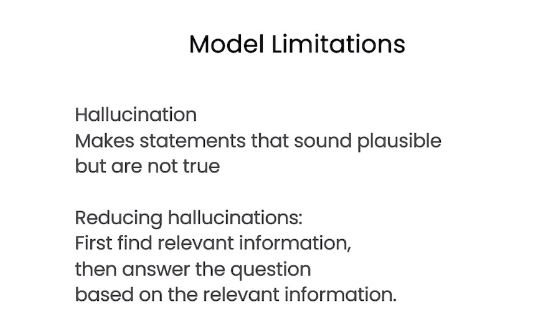
- Boie is a real company, the product name is not real.
prompt = f"""
Tell me about AeroGlide UltraSlim Smart Toothbrush by Boie
"""
response = get_completion(prompt)
print(response)
Output
The AeroGlide UltraSlim Smart Toothbrush by Boie is a high-tech toothbrush designed to provide a superior cleaning experience. It features ultra-thin bristles that are gentle on the gums and teeth, while still effectively removing plaque and debris. The toothbrush also has a built-in timer and pressure sensor to help ensure you are brushing for the recommended two minutes and not applying too much pressure.
The smart toothbrush connects to a mobile app via Bluetooth, allowing you to track your brushing habits and receive personalized recommendations for improving your oral hygiene routine. The app also provides reminders to replace your toothbrush head when it is time for a new one.
Overall, the AeroGlide UltraSlim Smart Toothbrush by Boie offers a convenient and effective way to maintain optimal oral health.
Iterative Prompt Development
In this lesson, you’ll iteratively analyze and refine your prompts to generate marketing copy from a product fact sheet.
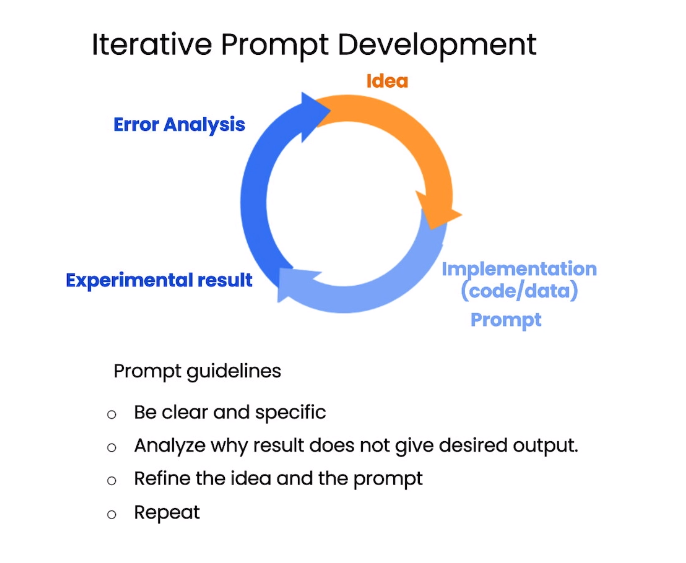
Setup
import openai
import os
from dotenv import load_dotenv, find_dotenv
_ = load_dotenv(find_dotenv()) # read local .env file
openai.api_key = os.getenv('OPENAI_API_KEY')
def get_completion(prompt, model="gpt-3.5-turbo"):
messages = [{"role": "user", "content": prompt}]
response = openai.ChatCompletion.create(
model=model,
messages=messages,
temperature=0, # this is the degree of randomness of the model's output
)
return response.choices[0].message["content"]
Note: In June 2023, OpenAI updated gpt-3.5-turbo. The results you see in the notebook may be slightly different than those in the video. Some of the prompts have also been slightly modified to product the desired results.
Generate a marketing product description from a product fact sheet
fact_sheet_chair = """
OVERVIEW
- Part of a beautiful family of mid-century inspired office furniture,
including filing cabinets, desks, bookcases, meeting tables, and more.
- Several options of shell color and base finishes.
- Available with plastic back and front upholstery (SWC-100)
or full upholstery (SWC-110) in 10 fabric and 6 leather options.
- Base finish options are: stainless steel, matte black,
gloss white, or chrome.
- Chair is available with or without armrests.
- Suitable for home or business settings.
- Qualified for contract use.
CONSTRUCTION
- 5-wheel plastic coated aluminum base.
- Pneumatic chair adjust for easy raise/lower action.
DIMENSIONS
- WIDTH 53 CM | 20.87”
- DEPTH 51 CM | 20.08”
- HEIGHT 80 CM | 31.50”
- SEAT HEIGHT 44 CM | 17.32”
- SEAT DEPTH 41 CM | 16.14”
OPTIONS
- Soft or hard-floor caster options.
- Two choices of seat foam densities:
medium (1.8 lb/ft3) or high (2.8 lb/ft3)
- Armless or 8 position PU armrests
MATERIALS
SHELL BASE GLIDER
- Cast Aluminum with modified nylon PA6/PA66 coating.
- Shell thickness: 10 mm.
SEAT
- HD36 foam
COUNTRY OF ORIGIN
- Italy
"""
prompt = f"""
Your task is to help a marketing team create a
description for a retail website of a product based
on a technical fact sheet.
Write a product description based on the information
provided in the technical specifications delimited by
triple backticks.
Technical specifications: ```{fact_sheet_chair}```
"""
response = get_completion(prompt)
print(response)
Output
Introducing our versatile and stylish mid-century inspired office chair, perfect for both home and business settings. This chair is part of a beautiful family of office furniture that includes filing cabinets, desks, bookcases, meeting tables, and more.
Customize your chair with several options of shell color and base finishes to suit your personal style. Choose between plastic back and front upholstery or full upholstery in a variety of fabric and leather options. The base finish options include stainless steel, matte black, gloss white, or chrome. You can also choose to have armrests or go for a sleek armless design.
Constructed with a 5-wheel plastic coated aluminum base, this chair features a pneumatic adjust for easy raise/lower action. The dimensions of the chair are as follows: width 53 cm, depth 51 cm, height 80 cm, seat height 44 cm, and seat depth 41 cm.
Personalize your chair even further with options such as soft or hard-floor caster options, two choices of seat foam densities, and armless or 8 position PU armrests. The materials used in the construction of this chair include cast aluminum with modified nylon PA6/PA66 coating for the shell base glider and HD36 foam for the seat.
Designed and made in Italy, this chair is not only stylish but also durable and functional. Elevate your workspace with our mid-century inspired office chair today!
Issue 1: The text is too long
- Limit the number of words/sentences/characters.
prompt = f"""
Your task is to help a marketing team create a
description for a retail website of a product based
on a technical fact sheet.
Write a product description based on the information
provided in the technical specifications delimited by
triple backticks.
Use at most 50 words.
Technical specifications: ```{fact_sheet_chair}```
"""
response = get_completion(prompt)
print(response)
Output
Introducing our versatile and stylish mid-century office chair, available in a range of colors and finishes to suit any space. With adjustable height and comfortable upholstery options, this chair is perfect for both home and business use. Made with quality materials from Italy, it's a blend of form and function.
len(response.split())
Output
50
Issue 2. Text focuses on the wrong details
- Ask it to focus on the aspects that are relevant to the intended audience.
prompt = f"""
Your task is to help a marketing team create a
description for a retail website of a product based
on a technical fact sheet.
Write a product description based on the information
provided in the technical specifications delimited by
triple backticks.
The description is intended for furniture retailers,
so should be technical in nature and focus on the
materials the product is constructed from.
Use at most 50 words.
Technical specifications: ```{fact_sheet_chair}```
"""
response = get_completion(prompt)
print(response)
Output
Introducing our versatile and stylish office chair, part of a mid-century inspired furniture collection. Constructed with a durable cast aluminum shell and base glider coated with modified nylon, this chair offers comfort with HD36 foam seating. Available in various colors and finishes, suitable for both home and business use. Made in Italy.
prompt = f"""
Your task is to help a marketing team create a
description for a retail website of a product based
on a technical fact sheet.
Write a product description based on the information
provided in the technical specifications delimited by
triple backticks.
The description is intended for furniture retailers,
so should be technical in nature and focus on the
materials the product is constructed from.
At the end of the description, include every 7-character
Product ID in the technical specification.
Use at most 50 words.
Technical specifications: ```{fact_sheet_chair}```
"""
response = get_completion(prompt)
print(response)
Output
Introducing our versatile and stylish office chair, featuring a durable cast aluminum shell with a nylon coating and comfortable HD36 foam seat. Choose from a variety of base finishes and upholstery options to suit your space. Perfect for both home and office use. Product IDs: SWC-100, SWC-110.
Issue 3. Description needs a table of dimensions
- Ask it to extract information and organize it in a table.
prompt = f"""
Your task is to help a marketing team create a
description for a retail website of a product based
on a technical fact sheet.
Write a product description based on the information
provided in the technical specifications delimited by
triple backticks.
The description is intended for furniture retailers,
so should be technical in nature and focus on the
materials the product is constructed from.
At the end of the description, include every 7-character
Product ID in the technical specification.
After the description, include a table that gives the
product's dimensions. The table should have two columns.
In the first column include the name of the dimension.
In the second column include the measurements in inches only.
Give the table the title 'Product Dimensions'.
Format everything as HTML that can be used in a website.
Place the description in a <div> element.
Technical specifications: ```{fact_sheet_chair}```
"""
response = get_completion(prompt)
print(response)
Output
prompt = f"""
Your task is to help a marketing team create a
description for a retail website of a product based
on a technical fact sheet.
Write a product description based on the information
provided in the technical specifications delimited by
triple backticks.
The description is intended for furniture retailers,
so should be technical in nature and focus on the
materials the product is constructed from.
At the end of the description, include every 7-character
Product ID in the technical specification.
After the description, include a table that gives the
product's dimensions. The table should have two columns.
In the first column include the name of the dimension.
In the second column include the measurements in inches only.
Give the table the title 'Product Dimensions'.
Format everything as HTML that can be used in a website.
Place the description in a <div> element.
Technical specifications: ```{fact_sheet_chair}```
"""
response = get_completion(prompt)
print(response)
<div>
<p>This mid-century inspired office chair is a perfect addition to any home or business setting. With a variety of shell colors and base finishes to choose from, you can customize it to fit your style. The chair is available with plastic back and front upholstery or full upholstery in a range of fabric and leather options. The 5-wheel plastic coated aluminum base ensures stability, while the pneumatic chair adjust allows for easy height adjustments. Made with high-quality materials like cast aluminum with modified nylon coating and HD36 foam, this chair is not only stylish but also durable. Choose between soft or hard-floor casters and two seat foam densities to make it your own. Made in Italy, this chair is designed to last and is qualified for contract use.</p>
<p>Product IDs: SWC-100, SWC-110</p>
<table>
<caption>Product Dimensions</caption>
<tr>
<th>Dimension</th>
<th>Measurements (inches)</th>
</tr>
<tr>
<td>Width</td>
<td>20.87"</td>
</tr>
<tr>
<td>Depth</td>
<td>20.08"</td>
</tr>
<tr>
<td>Height</td>
<td>31.50"</td>
</tr>
<tr>
<td>Seat Height</td>
<td>17.32"</td>
</tr>
<tr>
<td>Seat Depth</td>
<td>16.14"</td>
</tr>
</table>
</div>
Load Python libraries to view HTML
from IPython.display import display, HTML
display(HTML(response))
Output
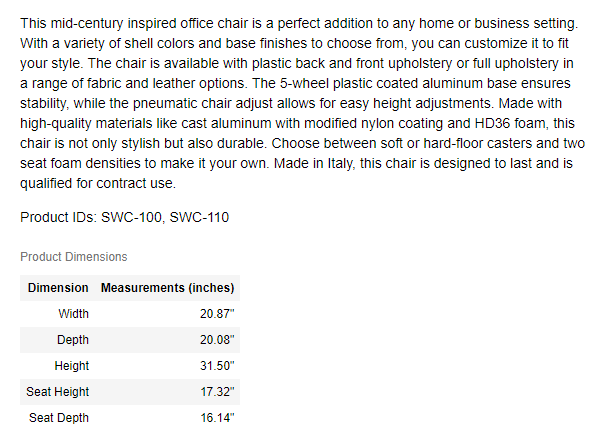
Summarizing
In this lesson, you will summarize text with a focus on specific topics.
Setup
import openai
import os
from dotenv import load_dotenv, find_dotenv
_ = load_dotenv(find_dotenv()) # read local .env file
openai.api_key = os.getenv('OPENAI_API_KEY')
def get_completion(prompt, model="gpt-3.5-turbo"): # Andrew mentioned that the prompt/ completion paradigm is preferable for this class
messages = [{"role": "user", "content": prompt}]
response = openai.ChatCompletion.create(
model=model,
messages=messages,
temperature=0, # this is the degree of randomness of the model's output
)
return response.choices[0].message["content"]
Text to summarize
prod_review = """
Got this panda plush toy for my daughter's birthday, \
who loves it and takes it everywhere. It's soft and \
super cute, and its face has a friendly look. It's \
a bit small for what I paid though. I think there \
might be other options that are bigger for the \
same price. It arrived a day earlier than expected, \
so I got to play with it myself before I gave it \
to her.
"""
Summarize with a word/sentence/character limit
prompt = f"""
Your task is to generate a short summary of a product \
review from an ecommerce site.
Summarize the review below, delimited by triple
backticks, in at most 30 words.
Review: ```{prod_review}```
"""
response = get_completion(prompt)
print(response)
Output
Summary:
Soft and cute panda plush toy loved by daughter, but smaller than expected for the price. Arrived early, allowing for personal enjoyment before gifting.
Summarize with a focus on shipping and delivery
prompt = f"""
Your task is to generate a short summary of a product \
review from an ecommerce site to give feedback to the \
Shipping deparmtment.
Summarize the review below, delimited by triple
backticks, in at most 30 words, and focusing on any aspects \
that mention shipping and delivery of the product.
Review: ```{prod_review}```
"""
response = get_completion(prompt)
print(response)
Output
The customer received the panda plush toy a day earlier than expected, allowing them to play with it before giving it to their daughter.
Summarize with a focus on price and value
prompt = f"""
Your task is to generate a short summary of a product \
review from an ecommerce site to give feedback to the \
pricing deparmtment, responsible for determining the \
price of the product.
Summarize the review below, delimited by triple
backticks, in at most 30 words, and focusing on any aspects \
that are relevant to the price and perceived value.
Review: ```{prod_review}```
"""
response = get_completion(prompt)
print(response)
Output
Summary:
Cute and soft panda plush toy, loved by daughter, but perceived as slightly overpriced for its size. Early delivery was a bonus.
Try “extract” instead of “summarize”
prompt = f"""
Your task is to extract relevant information from \
a product review from an ecommerce site to give \
feedback to the Shipping department.
From the review below, delimited by triple quotes \
extract the information relevant to shipping and \
delivery. Limit to 30 words.
Review: ```{prod_review}```
"""
response = get_completion(prompt)
print(response)
Output
Feedback: The product arrived a day earlier than expected, allowing the customer to play with it before giving it as a gift.
Summarize multiple product reviews
review_1 = prod_review
# review for a standing lamp
review_2 = """
Needed a nice lamp for my bedroom, and this one \
had additional storage and not too high of a price \
point. Got it fast - arrived in 2 days. The string \
to the lamp broke during the transit and the company \
happily sent over a new one. Came within a few days \
as well. It was easy to put together. Then I had a \
missing part, so I contacted their support and they \
very quickly got me the missing piece! Seems to me \
to be a great company that cares about their customers \
and products.
"""
# review for an electric toothbrush
review_3 = """
My dental hygienist recommended an electric toothbrush, \
which is why I got this. The battery life seems to be \
pretty impressive so far. After initial charging and \
leaving the charger plugged in for the first week to \
condition the battery, I've unplugged the charger and \
been using it for twice daily brushing for the last \
3 weeks all on the same charge. But the toothbrush head \
is too small. I’ve seen baby toothbrushes bigger than \
this one. I wish the head was bigger with different \
length bristles to get between teeth better because \
this one doesn’t. Overall if you can get this one \
around the $50 mark, it's a good deal. The manufactuer's \
replacements heads are pretty expensive, but you can \
get generic ones that're more reasonably priced. This \
toothbrush makes me feel like I've been to the dentist \
every day. My teeth feel sparkly clean!
"""
# review for a blender
review_4 = """
So, they still had the 17 piece system on seasonal \
sale for around $49 in the month of November, about \
half off, but for some reason (call it price gouging) \
around the second week of December the prices all went \
up to about anywhere from between $70-$89 for the same \
system. And the 11 piece system went up around $10 or \
so in price also from the earlier sale price of $29. \
So it looks okay, but if you look at the base, the part \
where the blade locks into place doesn’t look as good \
as in previous editions from a few years ago, but I \
plan to be very gentle with it (example, I crush \
very hard items like beans, ice, rice, etc. in the \
blender first then pulverize them in the serving size \
I want in the blender then switch to the whipping \
blade for a finer flour, and use the cross cutting blade \
first when making smoothies, then use the flat blade \
if I need them finer/less pulpy). Special tip when making \
smoothies, finely cut and freeze the fruits and \
vegetables (if using spinach-lightly stew soften the \
spinach then freeze until ready for use-and if making \
sorbet, use a small to medium sized food processor) \
that you plan to use that way you can avoid adding so \
much ice if at all-when making your smoothie. \
After about a year, the motor was making a funny noise. \
I called customer service but the warranty expired \
already, so I had to buy another one. FYI: The overall \
quality has gone done in these types of products, so \
they are kind of counting on brand recognition and \
consumer loyalty to maintain sales. Got it in about \
two days.
"""
reviews = [review_1, review_2, review_3, review_4]
for i in range(len(reviews)):
prompt = f"""
Your task is to generate a short summary of a product \
review from an ecommerce site.
Summarize the review below, delimited by triple \
backticks in at most 20 words.
Review: ```{reviews[i]}```
"""
response = get_completion(prompt)
print(i, response, "\n")
Output
0 Soft, cute panda plush toy loved by daughter, but small for price. Arrived early, friendly face.
1 Great lamp with storage, fast delivery, excellent customer service for missing parts. Easy to assemble.
2 Impressive battery life, small brush head, good deal for $50, generic replacement heads available, leaves teeth feeling clean.
3 17-piece system on sale for $49, prices increased later. Base quality not as good, motor issues after a year.
Inferring
In this lesson, you will infer sentiment and topics from product reviews and news articles.
Setup
import openai
import os
from dotenv import load_dotenv, find_dotenv
_ = load_dotenv(find_dotenv()) # read local .env file
openai.api_key = os.getenv('OPENAI_API_KEY')
def get_completion(prompt, model="gpt-3.5-turbo"):
messages = [{"role": "user", "content": prompt}]
response = openai.ChatCompletion.create(
model=model,
messages=messages,
temperature=0, # this is the degree of randomness of the model's output
)
return response.choices[0].message["content"]
Product review text
lamp_review = """
Needed a nice lamp for my bedroom, and this one had \
additional storage and not too high of a price point. \
Got it fast. The string to our lamp broke during the \
transit and the company happily sent over a new one. \
Came within a few days as well. It was easy to put \
together. I had a missing part, so I contacted their \
support and they very quickly got me the missing piece! \
Lumina seems to me to be a great company that cares \
about their customers and products!!
"""
Sentiment (positive/negative)
prompt = f"""
What is the sentiment of the following product review,
which is delimited with triple backticks?
Review text: '''{lamp_review}'''
"""
response = get_completion(prompt)
print(response)
Output
The sentiment of the review is positive. The reviewer is satisfied with the lamp, the customer service, and the company in general.
prompt = f"""
What is the sentiment of the following product review,
which is delimited with triple backticks?
Give your answer as a single word, either "positive" \
or "negative".
Review text: '''{lamp_review}'''
"""
response = get_completion(prompt)
print(response)
Output: Positive
Identify types of emotions
prompt = f"""
Identify a list of emotions that the writer of the \
following review is expressing. Include no more than \
five items in the list. Format your answer as a list of \
lower-case words separated by commas.
Review text: '''{lamp_review}'''
"""
response = get_completion(prompt)
print(response)
Output
happy, satisfied, grateful, impressed, content
Identify anger
prompt = f"""
Is the writer of the following review expressing anger?\
The review is delimited with triple backticks. \
Give your answer as either yes or no.
Review text: '''{lamp_review}'''
"""
response = get_completion(prompt)
print(response)
Output:No
Extract product and company name from customer reviews
prompt = f"""
Identify the following items from the review text:
- Item purchased by reviewer
- Company that made the item
The review is delimited with triple backticks. \
Format your response as a JSON object with \
"Item" and "Brand" as the keys.
If the information isn't present, use "unknown" \
as the value.
Make your response as short as possible.
Review text: '''{lamp_review}'''
"""
response = get_completion(prompt)
print(response)
Output
{
"Item": "lamp",
"Brand": "Lumina"
}
Doing multiple tasks at once
prompt = f"""
Identify the following items from the review text:
- Sentiment (positive or negative)
- Is the reviewer expressing anger? (true or false)
- Item purchased by reviewer
- Company that made the item
The review is delimited with triple backticks. \
Format your response as a JSON object with \
"Sentiment", "Anger", "Item" and "Brand" as the keys.
If the information isn't present, use "unknown" \
as the value.
Make your response as short as possible.
Format the Anger value as a boolean.
Review text: '''{lamp_review}'''
"""
response = get_completion(prompt)
print(response)
Output
{
"Sentiment": "positive",
"Anger": false,
"Item": "lamp",
"Brand": "Lumina"
}
Inferring topics
story = """
In a recent survey conducted by the government,
public sector employees were asked to rate their level
of satisfaction with the department they work at.
The results revealed that NASA was the most popular
department with a satisfaction rating of 95%.
One NASA employee, John Smith, commented on the findings,
stating, "I'm not surprised that NASA came out on top.
It's a great place to work with amazing people and
incredible opportunities. I'm proud to be a part of
such an innovative organization."
The results were also welcomed by NASA's management team,
with Director Tom Johnson stating, "We are thrilled to
hear that our employees are satisfied with their work at NASA.
We have a talented and dedicated team who work tirelessly
to achieve our goals, and it's fantastic to see that their
hard work is paying off."
The survey also revealed that the
Social Security Administration had the lowest satisfaction
rating, with only 45% of employees indicating they were
satisfied with their job. The government has pledged to
address the concerns raised by employees in the survey and
work towards improving job satisfaction across all departments.
"""
Infer 5 topics
prompt = f"""
Determine five topics that are being discussed in the \
following text, which is delimited by triple backticks.
Make each item one or two words long.
Format your response as a list of items separated by commas.
Text sample: '''{story}'''
"""
response = get_completion(prompt)
print(response)
Output
1. Survey
2. Job satisfaction
3. NASA
4. Social Security Administration
5. Government pledge
Make a news alert for certain topics
topic_list = [
"nasa", "local government", "engineering",
"employee satisfaction", "federal government"
]
prompt = f"""
Determine whether each item in the following list of \
topics is a topic in the text below, which
is delimited with triple backticks.
Give your answer as list with 0 or 1 for each topic.\
List of topics: {", ".join(topic_list)}
Text sample: '''{story}'''
"""
response = get_completion(prompt)
print(response)
Output
[1, 0, 0, 1, 1]
Transforming
In this notebook, we will explore how to use Large Language Models for text transformation tasks such as language translation, spelling and grammar checking, tone adjustment, and format conversion.
Setup
import openai
import os
from dotenv import load_dotenv, find_dotenv
_ = load_dotenv(find_dotenv()) # read local .env file
openai.api_key = os.getenv('OPENAI_API_KEY')
def get_completion(prompt, model="gpt-3.5-turbo", temperature=0):
messages = [{"role": "user", "content": prompt}]
response = openai.ChatCompletion.create(
model=model,
messages=messages,
temperature=temperature,
)
return response.choices[0].message["content"]
Translation
ChatGPT is trained with sources in many languages. This gives the model the ability to do translation. Here are some examples of how to use this capability.
prompt = f"""
Translate the following English text to Spanish: \
```Hi, I would like to order a blender```
"""
response = get_completion(prompt)
print(response)
Output
Hola, me gustaría ordenar una licuadora.
prompt = f"""
Tell me which language this is:
```Combien coûte le lampadaire?```
"""
response = get_completion(prompt)
print(response)
Output
This is French.
prompt = f"""
Translate the following text to French and Spanish
and English pirate: \
```I want to order a basketball```
"""
response = get_completion(prompt)
print(response)
Output
French: ```Je veux commander un ballon de basket```
Spanish: ```Quiero ordenar un balón de baloncesto```
Pirate English: ```I be wantin' to order a basketball```
prompt = f"""
Translate the following text to Spanish in both the \
formal and informal forms:
'Would you like to order a pillow?'
"""
response = get_completion(prompt)
print(response)
Formal: ¿Le gustaría ordenar una almohada?
Informal: ¿Te gustaría ordenar una almohada?
Universal Translator
Imagine you are in charge of IT at a large multinational e-commerce company. Users are messaging you with IT issues in all their native languages. Your staff is from all over the world and speaks only their native languages. You need a universal translator!
user_messages = [
"La performance du système est plus lente que d'habitude.", # System performance is slower than normal
"Mi monitor tiene píxeles que no se iluminan.", # My monitor has pixels that are not lighting
"Il mio mouse non funziona", # My mouse is not working
"Mój klawisz Ctrl jest zepsuty", # My keyboard has a broken control key
"我的屏幕在闪烁" # My screen is flashing
]
for issue in user_messages:
prompt = f"Tell me what language this is: ```{issue}```"
lang = get_completion(prompt)
print(f"Original message ({lang}): {issue}")
prompt = f"""
Translate the following text to English \
and Korean: ```{issue}```
"""
response = get_completion(prompt)
print(response, "\n")
Output
Original message (This is French.): La performance du système est plus lente que d'habitude.
English: "The system performance is slower than usual."
Korean: "시스템 성능이 평소보다 느립니다."
Original message (This is Spanish.): Mi monitor tiene píxeles que no se iluminan.
English: "My monitor has pixels that do not light up."
Korean: "내 모니터에는 빛나지 않는 픽셀이 있습니다."
Original message (Italian): Il mio mouse non funziona
English: My mouse is not working
Korean: 내 마우스가 작동하지 않습니다
Original message (This is Polish.): Mój klawisz Ctrl jest zepsuty
English: My Ctrl key is broken
Korean: 제 Ctrl 키가 고장 났어요
Original message (This is Chinese.): 我的屏幕在闪烁
English: My screen is flickering
Korean: 내 화면이 깜박거립니다
Tone Transformation
Writing can vary based on the intended audience. ChatGPT can produce different tones.
prompt = f"""
Translate the following from slang to a business letter:
'Dude, This is Joe, check out this spec on this standing lamp.'
"""
response = get_completion(prompt)
print(response)
Output
Dear Sir/Madam,
I am writing to bring to your attention the specifications of a standing lamp that I believe may be of interest to you.
Sincerely,
Joe
Format Conversion
ChatGPT can translate between formats. The prompt should describe the input and output formats.
data_json = { "resturant employees" :[
{"name":"Shyam", "email":"shyamjaiswal@gmail.com"},
{"name":"Bob", "email":"bob32@gmail.com"},
{"name":"Jai", "email":"jai87@gmail.com"}
]}
prompt = f"""
Translate the following python dictionary from JSON to an HTML \
table with column headers and title: {data_json}
"""
response = get_completion(prompt)
print(response)
Output
<html>
<head>
<title>Restaurant Employees</title>
</head>
<body>
<table>
<tr>
<th>Name</th>
<th>Email</th>
</tr>
<tr>
<td>Shyam</td>
<td>shyamjaiswal@gmail.com</td>
</tr>
<tr>
<td>Bob</td>
<td>bob32@gmail.com</td>
</tr>
<tr>
<td>Jai</td>
<td>jai87@gmail.com</td>
</tr>
</table>
</body>
</html>
from IPython.display import display, Markdown, Latex, HTML, JSON
display(HTML(response))
Output
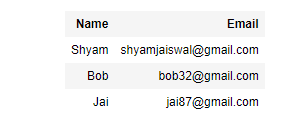
Spellcheck/Grammar check.
Here are some examples of common grammar and spelling problems and the LLM’s response.
To signal to the LLM that you want it to proofread your text, you instruct the model to ‘proofread’ or ‘proofread and correct’.
text = [
"The girl with the black and white puppies have a ball.", # The girl has a ball.
"Yolanda has her notebook.", # ok
"Its going to be a long day. Does the car need it’s oil changed?", # Homonyms
"Their goes my freedom. There going to bring they’re suitcases.", # Homonyms
"Your going to need you’re notebook.", # Homonyms
"That medicine effects my ability to sleep. Have you heard of the butterfly affect?", # Homonyms
"This phrase is to cherck chatGPT for speling abilitty" # spelling
]
for t in text:
prompt = f"""Proofread and correct the following text
and rewrite the corrected version. If you don't find
and errors, just say "No errors found". Don't use
any punctuation around the text:
```{t}```"""
response = get_completion(prompt)
print(response)
Output
The girl with the black and white puppies has a ball.
No errors found
No errors found.
Their goes my freedom. There going to bring they’re suitcases.
No errors found.
Rewritten:
Their goes my freedom. There going to bring their suitcases.
You're going to need your notebook.
No errors found.
No errors found
text = f"""
Got this for my daughter for her birthday cuz she keeps taking \
mine from my room. Yes, adults also like pandas too. She takes \
it everywhere with her, and it's super soft and cute. One of the \
ears is a bit lower than the other, and I don't think that was \
designed to be asymmetrical. It's a bit small for what I paid for it \
though. I think there might be other options that are bigger for \
the same price. It arrived a day earlier than expected, so I got \
to play with it myself before I gave it to my daughter.
"""
prompt = f"proofread and correct this review: ```{text}```"
response = get_completion(prompt)
print(response)
Output
Got this for my daughter for her birthday because she keeps taking mine from my room. Yes, adults also like pandas too. She takes it everywhere with her, and it's super soft and cute. One of the ears is a bit lower than the other, and I don't think that was designed to be asymmetrical. It's a bit small for what I paid for it though. I think there might be other options that are bigger for the same price. It arrived a day earlier than expected, so I got to play with it myself before I gave it to my daughter.
prompt = f"""
proofread and correct this review. Make it more compelling.
Ensure it follows APA style guide and targets an advanced reader.
Output in markdown format.
Text: ```{text}```
"""
response = get_completion(prompt)
display(Markdown(response))
Output
I purchased this adorable panda plush as a birthday gift for my daughter, as she kept borrowing mine from my room. It's worth noting that adults can also appreciate the charm of pandas. The plush is incredibly soft and cute, and my daughter carries it everywhere with her. However, I did notice that one of the ears is slightly lower than the other, which seems to be unintentional. Additionally, I found the size to be a bit smaller than expected given the price. I believe there may be larger options available for the same cost. Despite this, the plush arrived a day earlier than anticipated, allowing me to enjoy it myself before gifting it to my daughter. Overall, while there are some minor flaws, the quality and cuteness of this panda plush make it a delightful gift for any panda enthusiast.
Expanding
In this lesson, you will generate customer service emails that are tailored to each customer’s review.
Setup
import openai
import os
from dotenv import load_dotenv, find_dotenv
_ = load_dotenv(find_dotenv()) # read local .env file
openai.api_key = os.getenv('OPENAI_API_KEY')
def get_completion(prompt, model="gpt-3.5-turbo",temperature=0): # Andrew mentioned that the prompt/ completion paradigm is preferable for this class
messages = [{"role": "user", "content": prompt}]
response = openai.ChatCompletion.create(
model=model,
messages=messages,
temperature=temperature, # this is the degree of randomness of the model's output
)
return response.choices[0].message["content"]
Customize the automated reply to a customer email
# given the sentiment from the lesson on "inferring",
# and the original customer message, customize the email
sentiment = "negative"
# review for a blender
review = f"""
So, they still had the 17 piece system on seasonal \
sale for around $49 in the month of November, about \
half off, but for some reason (call it price gouging) \
around the second week of December the prices all went \
up to about anywhere from between $70-$89 for the same \
system. And the 11 piece system went up around $10 or \
so in price also from the earlier sale price of $29. \
So it looks okay, but if you look at the base, the part \
where the blade locks into place doesn’t look as good \
as in previous editions from a few years ago, but I \
plan to be very gentle with it (example, I crush \
very hard items like beans, ice, rice, etc. in the \
blender first then pulverize them in the serving size \
I want in the blender then switch to the whipping \
blade for a finer flour, and use the cross cutting blade \
first when making smoothies, then use the flat blade \
if I need them finer/less pulpy). Special tip when making \
smoothies, finely cut and freeze the fruits and \
vegetables (if using spinach-lightly stew soften the \
spinach then freeze until ready for use-and if making \
sorbet, use a small to medium sized food processor) \
that you plan to use that way you can avoid adding so \
much ice if at all-when making your smoothie. \
After about a year, the motor was making a funny noise. \
I called customer service but the warranty expired \
already, so I had to buy another one. FYI: The overall \
quality has gone done in these types of products, so \
they are kind of counting on brand recognition and \
consumer loyalty to maintain sales. Got it in about \
two days.
"""
prompt = f"""
You are a customer service AI assistant.
Your task is to send an email reply to a valued customer.
Given the customer email delimited by ```, \
Generate a reply to thank the customer for their review.
If the sentiment is positive or neutral, thank them for \
their review.
If the sentiment is negative, apologize and suggest that \
they can reach out to customer service.
Make sure to use specific details from the review.
Write in a concise and professional tone.
Sign the email as `AI customer agent`.
Customer review: ```{review}```
Review sentiment: {sentiment}
"""
response = get_completion(prompt)
print(response)
Output
Dear Valued Customer,
Thank you for taking the time to share your feedback with us. We are sorry to hear about your experience with the pricing changes and the decrease in quality of the product you purchased. We apologize for any inconvenience this may have caused you.
If you have any further concerns or would like to discuss this matter further, please feel free to reach out to our customer service team. They will be more than happy to assist you with any issues you may have encountered.
We appreciate your loyalty and feedback as it helps us improve our products and services for all our customers.
Thank you again for your review.
AI customer agent
Using different temperature
prompt = f"""
You are a customer service AI assistant.
Your task is to send an email reply to a valued customer.
Given the customer email delimited by ```, \
Generate a reply to thank the customer for their review.
If the sentiment is positive or neutral, thank them for \
their review.
If the sentiment is negative, apologize and suggest that \
they can reach out to customer service.
Make sure to use specific details from the review.
Write in a concise and professional tone.
Sign the email as `AI customer agent`.
Customer review: ```{review}```
Review sentiment: {sentiment}
"""
response = get_completion(prompt, temperature=0.7)
print(response)
Output
Dear Valued Customer,
Thank you for taking the time to share your feedback with us, we truly appreciate it. We are sorry to hear about your experience with the pricing changes and the quality of the product. We strive to provide the best products and service to our customers, and we apologize for any inconvenience this may have caused you.
If you have any further concerns or would like to discuss this matter further, please feel free to reach out to our customer service team for assistance. We are here to help in any way we can.
Thank you again for your feedback and for choosing our products. We value your loyalty and will work hard to ensure your satisfaction in the future.
AI customer agent
Chatbot
The Chat Format
In this notebook, you will explore how you can utilize the chat format to have extended conversations with chatbots personalized or specialized for specific tasks or behaviors.
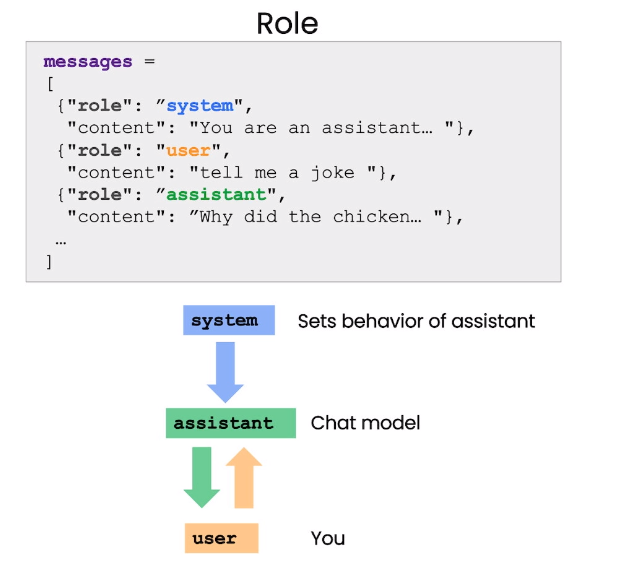
Setup
import os
import openai
from dotenv import load_dotenv, find_dotenv
_ = load_dotenv(find_dotenv()) # read local .env file
openai.api_key = os.getenv('OPENAI_API_KEY')
def get_completion(prompt, model="gpt-3.5-turbo"):
messages = [{"role": "user", "content": prompt}]
response = openai.ChatCompletion.create(
model=model,
messages=messages,
temperature=0, # this is the degree of randomness of the model's output
)
return response.choices[0].message["content"]
def get_completion_from_messages(messages, model="gpt-3.5-turbo", temperature=0):
response = openai.ChatCompletion.create(
model=model,
messages=messages,
temperature=temperature, # this is the degree of randomness of the model's output
)
# print(str(response.choices[0].message))
return response.choices[0].message["content"]
messages = [
{'role':'system', 'content':'You are an assistant that speaks like Shakespeare.'},
{'role':'user', 'content':'tell me a joke'},
{'role':'assistant', 'content':'Why did the chicken cross the road'},
{'role':'user', 'content':'I don\'t know'} ]
response = get_completion_from_messages(messages, temperature=1)
print(response)
Output
To get to the other side, of course! Oh, what a jest, a simple yet timeless merriment!
messages = [
{'role':'system', 'content':'You are friendly chatbot.'},
{'role':'user', 'content':'Hi, my name is Isa'} ]
response = get_completion_from_messages(messages, temperature=1)
print(response)
Output
Hello Isa! It's great to meet you. How can I assist you today?
messages = [
{'role':'system', 'content':'You are friendly chatbot.'},
{'role':'user', 'content':'Yes, can you remind me, What is my name?'} ]
response = get_completion_from_messages(messages, temperature=1)
print(response)
Output
I'm sorry, but I am not able to remember personal information like your name. How can I assist you today?
messages = [
{'role':'system', 'content':'You are friendly chatbot.'},
{'role':'user', 'content':'Hi, my name is Isa'},
{'role':'assistant', 'content': "Hi Isa! It's nice to meet you. \
Is there anything I can help you with today?"},
{'role':'user', 'content':'Yes, you can remind me, What is my name?'} ]
response = get_completion_from_messages(messages, temperature=1)
print(response)
Output
Your name is Isa!
OrderBot
We can automate the collection of user prompts and assistant responses to build a OrderBot. The OrderBot will take orders at a pizza restaurant.
def collect_messages(_):
prompt = inp.value_input
inp.value = ''
context.append({'role':'user', 'content':f"{prompt}"})
response = get_completion_from_messages(context)
context.append({'role':'assistant', 'content':f"{response}"})
panels.append(
pn.Row('User:', pn.pane.Markdown(prompt, width=600)))
panels.append(
pn.Row('Assistant:', pn.pane.Markdown(response, width=600, style={'background-color': '#F6F6F6'})))
return pn.Column(*panels)
import panel as pn # GUI
pn.extension()
panels = [] # collect display
context = [ {'role':'system', 'content':"""
You are OrderBot, an automated service to collect orders for a pizza restaurant. \
You first greet the customer, then collects the order, \
and then asks if it's a pickup or delivery. \
You wait to collect the entire order, then summarize it and check for a final \
time if the customer wants to add anything else. \
If it's a delivery, you ask for an address. \
Finally you collect the payment.\
Make sure to clarify all options, extras and sizes to uniquely \
identify the item from the menu.\
You respond in a short, very conversational friendly style. \
The menu includes \
pepperoni pizza 12.95, 10.00, 7.00 \
cheese pizza 10.95, 9.25, 6.50 \
eggplant pizza 11.95, 9.75, 6.75 \
fries 4.50, 3.50 \
greek salad 7.25 \
Toppings: \
extra cheese 2.00, \
mushrooms 1.50 \
sausage 3.00 \
canadian bacon 3.50 \
AI sauce 1.50 \
peppers 1.00 \
Drinks: \
coke 3.00, 2.00, 1.00 \
sprite 3.00, 2.00, 1.00 \
bottled water 5.00 \
"""} ] # accumulate messages
inp = pn.widgets.TextInput(value="Hi", placeholder='Enter text here…')
button_conversation = pn.widgets.Button(name="Chat!")
interactive_conversation = pn.bind(collect_messages, button_conversation)
dashboard = pn.Column(
inp,
pn.Row(button_conversation),
pn.panel(interactive_conversation, loading_indicator=True, height=300),
)
dashboard
Output

messages = context.copy()
messages.append(
{'role':'system', 'content':'create a json summary of the previous food order. Itemize the price for each item\
The fields should be 1) pizza, include size 2) list of toppings 3) list of drinks, include size 4) list of sides include size 5)total price '},
)
#The fields should be 1) pizza, price 2) list of toppings 3) list of drinks, include size include price 4) list of sides include size include price, 5)total price '},
response = get_completion_from_messages(messages, temperature=0)
print(response)
Output
{
"pizza": {
"type": "pepperoni pizza",
"size": "large"
},
"toppings": [
"extra cheese",
"mushrooms"
],
"drinks": [
{
"type": "coke",
"size": "medium"
}
],
"sides": [
{
"type": "fries",
"size": "regular"
}
],
"total price": 22.45
}
后记
2024年3月9日花费1小时完成这门ChatGPT提示词工程的入门课程,形成了这篇笔记。这里新习到的是API中的聊天机器人的设置。





